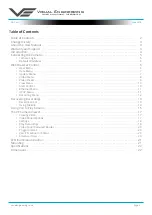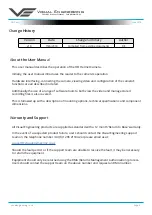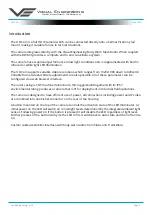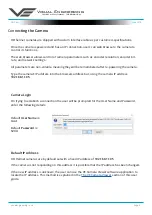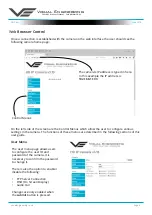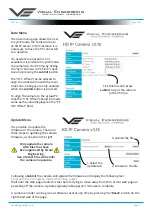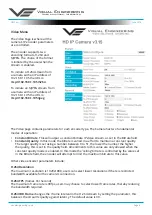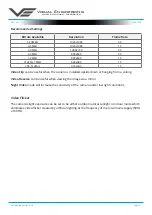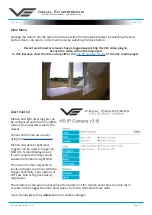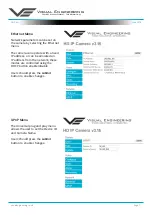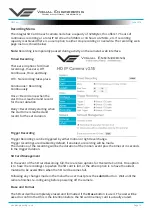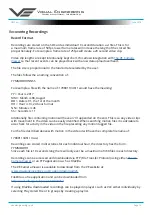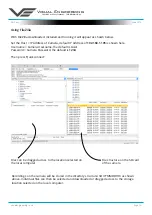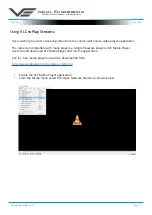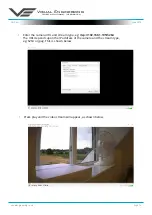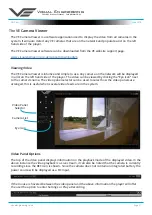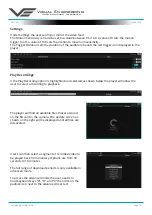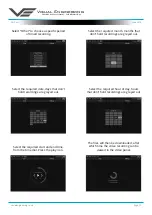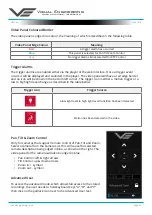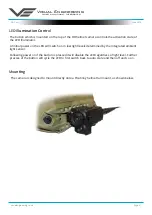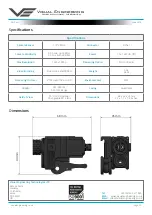
HD Cam
Visual Engineering
Video solutions. Integrated
visualengineering.co.uk
Page 13
June 2018
Recovering Recordings
Recordings are stored on the SD Card as individual 10 second duration .avi files. This is for
a maximum frame rate of 50fps, lower frame rates will increase the length of the stored file
proportionately. For example a frame rate of 25fps will create a 20 second video clip.
Video clip lengths are kept intentionally kept short, this allows integration with
so that recent events can be played back with a low data upload overhead.
The file size is proportional to the total bitrate selected by the user.
The files follow the a naming convention of:
YYMMDDHHNNSS
For example a file with the name of: 170801134611 would have the meaning:
YY = Year is 2017
MM = Month is 08, August
DD = Date is 01, the 1st of the month
HH = Hour is 13, 24 hour format
NN = Minutes is 46
SS = Seconds is 11
Additionally files containing motion will have an ‘m’ appended on the end. This is so any video clips
with movement in the video can be easily identified. When searching motion files it is advisable to
also check for activity in the video in the file preceding any motion tagged file.
For the file described above with motion in the video it will have the complete file name of:
170801134611m.avi
Recordings are stored in directories for each individual hour, the directory has the form:
YYMMDDHH
Since each file is 10 seconds long there will only ever be a maximum of 360 files in each directory.
Recordings can be accessed and downloaded via FTP (File Transfer Protocol) using either
or an FTP application such as FileZilla.
The VE Camera Viewer is available to download from the VE website at:
www.visualengineering.co.uk/supportdownload/26
FileZilla is a free application and can be downloaded from
http://sourceforge.net/projects/FileZilla/
If using FileZilla, downloaded recordings can be played in players such as VLC either individually by
selecting Play stored File or in groups by creating a play list.
Record Format


